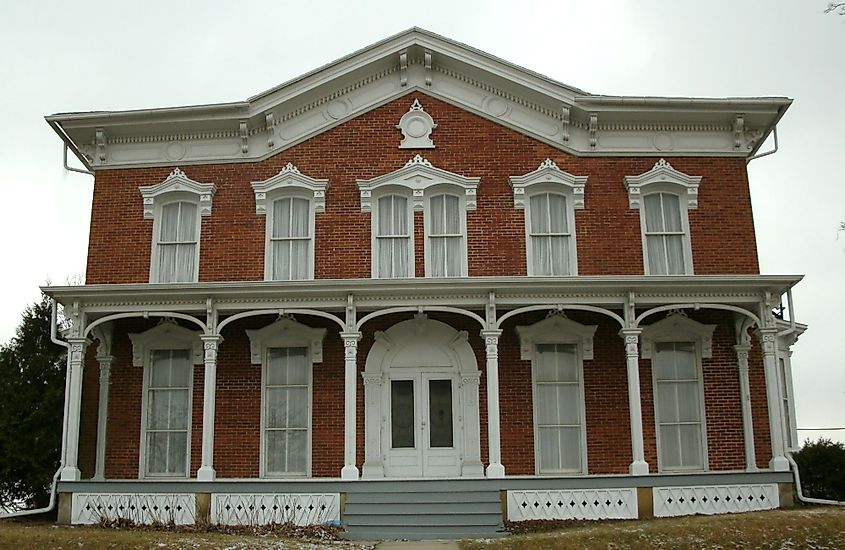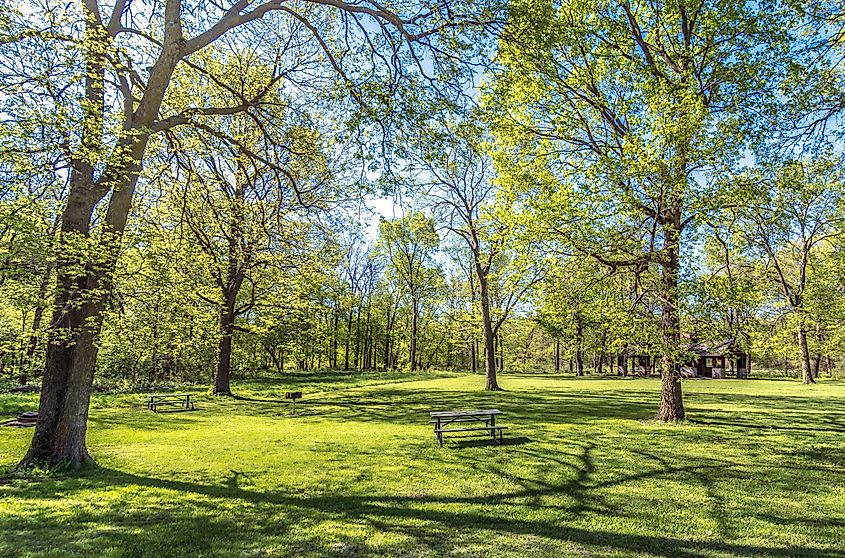Waterloo is a large city located in Black Hawk County, along both sides of the Cedar River in the northeastern part of the US state of Iowa. With its countless amenities and tourist attractions, Waterloo – one of Iowa's most populous cities – is the perfect vacation destination. With its vast trail network, vibrant arts district, and dozens of local restaurants, sports arenas, and entertainment options, Waterloo offers a unique experience that gets better with each visit.
Geography and Climate of Waterloo
Waterloo is the largest and most populous city in the Waterloo-Cedar Falls Metropolitan Statistical Area. It is bordered by Cedar Falls to the west, Hudson to the southwest, and Evansdale to the southeast. Highways that pass through the city include US highways 20, 218, and 63, with approximately 198 signalized intersections. Waterloo covers a total area of 164.29 sq. km., of which 159.53 sq. km. are occupied by the land, and the 4.76 sq.km. covered by water.
According to the Köppen climate classification, Waterloo experiences a humid continental climate characterized by hot-humid summers and dry-cold winters. The average annual temperature is 8.8°C, with July and January recording the highest (23.1C) and lowest (-7.5°C) average temperatures, respectively. On average, Waterloo receives 878.8mm of rainfall per year, with June and January reporting the highest (127mm) and lowest (20.3mm) figures, respectively. The rainy season lasts from February to December, while the snowfall from November to March.
History of Waterloo


Prairie Rapids Crossing was the name of Waterloo. On the eastern banks of the Cedar River, George and Mary Melrose Hanna and their children established the first settlement in 1845. The first passenger train arrived in 1861 and the town was officially incorporated in 1868. From 1895 to 1915, the town saw a tremendous increase in population. Manufacturing businesses, railroad businesses, and wholesale businesses flourished during the era. Waterloo gained popularity as “The Factory City of Iowa.” The town was also home to prominent businesses such as Rath Packing, the Galloway Company, and Litchfield Manufacturing.
The population and economy of Waterloo
According to the US Census, Waterloo has a population of 67,314, where 50.4% are female and 49.6% are male. The racial makeup of the city is 69.5% White (non-Hispanic/Latino), 17.4% African American or Black, 7.1% Hispanic or Latino, and 2.3% Asian. The rest are distributed among American Indians and Alaska Natives (AI/AN), Native Hawaiians and other Pacific Islanders, and mixed races. English is spoken by 87.4% of the population. The rest speak Indo-European languages (5.6%), Spanish (4.8%), Asian and Pacific Island languages (1.7%), and other foreign languages (0.5%). Only 34.9% of the population in Waterloo are naturalized US citizens. Veterans make up 6.9% of Waterloo's population, of which 91% are male and 9% are female.
According to the same Census, the employment rate in Waterloo is 61.1%, with a poverty rate of 17.5%. The homeownership rate is 59.9%, where the median gross rental cost is $776 per month, with a median household income of $46,942. According to Sperling's BestPlaces, the unemployment rate in Waterloo is 5.6%. The Waterloo job market has grown by 0.3% in recent years. Compared to the US average of 33.5%, future job growth is expected to be 19.9% over the next ten years.
Sights in Waterloo


RiverLoop Amphitheater
This spectacular outdoor performing arts complex is the centerpiece of Waterloo's waterfront. The Riverloop Amphitheater's seating area offers spectacular views of the Cedar River from the embankment and the stage below along the River loop. The adjacent Expo Plaza complements the auditorium and can accommodate an audience of up to 600 people. This location hosts Cinema on the Cedar Movie Nights, which feature family-friendly movies, as well as the outdoor concert series during the summer. Public access to both series is free.
John Deere Tractor and Engine Museum
The Waterloo Gasoline Engine Business, famous for its Waterloo Boy tractors, was acquired by John Deere, a company known for its agricultural machinery, in 1918. The company continues to be the city's largest employer, producing tractors, engines and parts in state-of-the-art facilities accessible for guided tours. On the site of the former Waterloo Tractor Works, which later operated as John Deere's first tractor factory, the company created a new museum in 2014. Featuring equipment from the company's illustrious past, the interior features a beautifully presented timeline of the business, the technology and Iowa agriculture in general. The museum includes a wealth of fascinating historical passages as well as kid-friendly interactive exhibits to capture their attention.
Waterloo Riverloop Bike Path
The ease with which one can drive or walk through Waterloo and Cedar Falls is second to none. The banks of the Cedar River are highly accessible, and there are dozens of miles of multi-use trails that reach every part of the metro area. The Riverloop, which runs more than 16 miles between downtown Waterloo and downtown Cedar Falls, serves Waterloo's riverside industrial area. You can take shortcuts whenever you need, thanks to three easy river crossings. On the former route of the Illinois Central Railroad, which closed in the 1970s, you can connect to the 52-mile Cedar Valley Nature Trail southeast of town, which extends to Hiawatha.
Waterloo City has it all for you, whether you're looking for a vibrant nightlife or a quiet retreat in nature reserves. From water and theme parks to acclaimed museums and family entertainment, there's something for everyone in this exciting downtown neighborhood. The numerous museums offer a wealth of information and attractions that combine learning and fun. This vibrant neighborhood will undoubtedly leave you with priceless memories and unique encounters.



